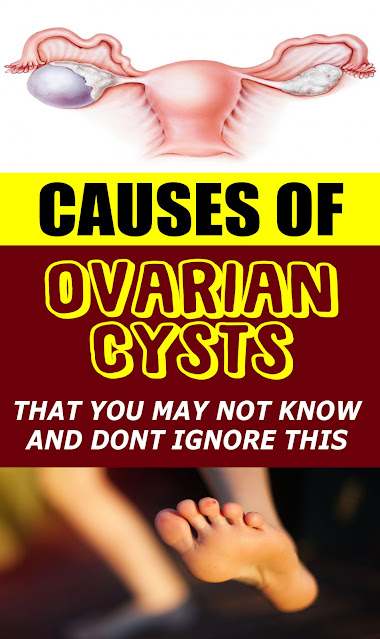During women’s reproductive years, ovarian cysts are fluid-filled sacs that resemble blisters. The ovaries, the almond-shaped organs on either side of the uterus, are where these cysts develop. The majority of ovarian cyst types are benign and disappear on their own. There are some, though, that could point to other health issues or even cause fertility issues.
Types of Ovarian Cysts
There are several different types of ovarian cysts:1
- Functional Cysts. These cysts will often shrink and disappear within two or three menstrual cycles. Because this type of cyst is formed during ovulation, it rarely occurs in menopausal women as eggs are no longer being produced.
- Dermoid Cysts. These cysts are filled with various types of tissues, including hair and skin.
- Endometrioma Cysts. These cysts are also known as the “chocolate cysts” of endometriosis, and they form when tissue similar to the lining of the uterus attaches to the ovaries.
- Cystadenoma Cysts. These cysts develop from cells on the outer surface of the ovaries.
- Polycystic Ovarian Disease. This disease, also commonly known as Polycystic Ovary Syndrome (PCOS), refers to cysts that form from a buildup of follicles. They cause the ovaries to enlarge and create a thick outer covering, which may prevent ovulation from occurring. They are often the cause of fertility problems.
Ovarian Cyst Symptoms
Ovarian cysts often cause no symptoms; however, when symptoms are present, you may notice a sharp or dull ache that may come and go or a sense of bloating or pressure in the lower abdomen. Pain during intercourse and at other times can also indicate the presence of ovarian cysts.1
If a cyst ruptures, it can cause sudden, severe pain. Pain can also be caused when a cyst is twisted (called torsion), which can block the flow of blood to the ovary.1
Other possible symptoms of ovarian cysts include delayed, irregular or unusually painful periods. If you experience any of these symptoms, notify your healthcare provider as soon as possible.
Causes
The normal function of the ovaries is to produce an egg each month. During the process of ovulation, a cyst-like structure called a follicle is formed inside the ovary. The mature follicle ruptures when an egg is released during ovulation. A corpus luteum forms from the empty follicle and, if pregnancy does not occur, the corpus luteum dissolves.
Sometimes, however, this process does not conclude appropriately, causing the most common type of ovarian cyst: functional cysts. Abnormal ovarian cysts, such as polycystic ovarian disease, may also occur as the result of an imbalance of female hormones (estrogen and progesterone).
Diagnosis
Unless symptoms are present, ovarian cysts are typically diagnosed during an annual pelvic examination. Other diagnostic tests, such as an ultrasound or a hormone level test, may be done if your physician detects any abnormalities.
Treatment
Treatment of ovarian cysts depends on several factors, including the size and type of cyst, the woman’s age and general health, her future pregnancy plans and her specific symptoms.
The earlier ovarian cysts are found, the less invasive the treatment required.
Often, young women who are not experiencing symptoms are advised to wait two or three months to see if the cysts dissolve on their own.1 In most cases, functional ovarian cysts will dissolve without any medical intervention or treatment.
Occasionally, oral contraceptives or hormones will be prescribed to shrink functional ovarian cysts.1 Oral contraceptives are not an effective treatment for other types of benign ovarian cysts, but they do offer some protection against malignant ovarian cysts.
Surgery is sometimes necessary to treat ovarian cysts that are unresponsive to hormonal treatment. You might need surgery if your cysts do not disappear after a few menstrual cycles, or if they are extremely large.
Post-Menopausal Women
Women who develop ovarian cysts after menopause are more likely to have malignancies.1 For post-menopausal women experiencing bleeding and pain, surgery may be necessary. The procedures range from simply removing the cyst to removing the entire ovary. In some severe cases, a hysterectomy (removal of the uterus) is recommended.
The specific surgical procedure required depends on a number of factors, but, typically, the earlier ovarian cysts are discovered, the less extensive the procedure. Although your physician will discuss the planned procedure with you, you should keep in mind that the exact extent of the surgery may be unknown until the operation is in progress.
A Word From Verywell
Because ovarian cysts often cause no symptoms, it is especially important for women who have had cysts in the past to have regular pelvic examinations. These women are at a greater risk of developing additional cysts. Women who suffer from endometriosis may see their symptoms worsened by the presence of ovarian cysts, and there’s an increased chance they’ll need to have their ovaries removed. In the case of malignant ovarian cysts, which again, are rare, early treatment offers the best hope for recovery.
